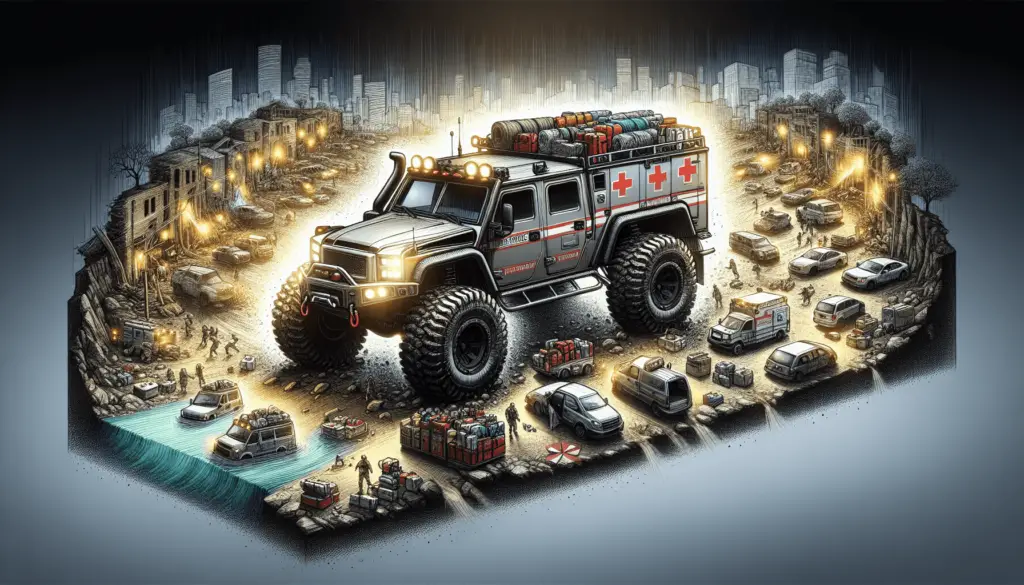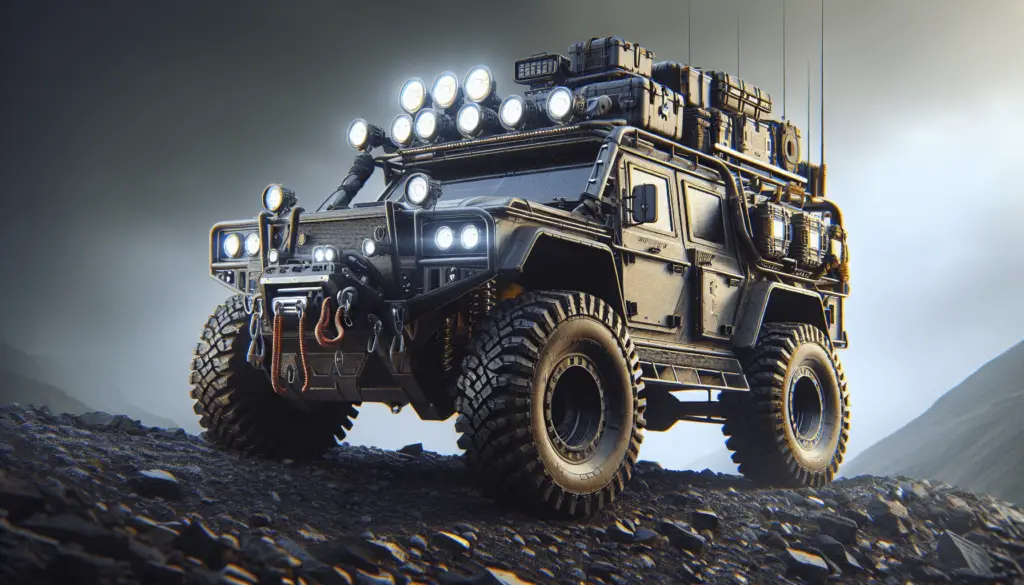Crafting The Ultimate Disaster Response Vehicle
Disasters can strike at any moment, and having a well-equipped disaster response vehicle can make all the difference in the world. Whether you are part of a professional emergency response team or a volunteer looking to help out in times of crisis, having a vehicle ready to go can save lives. In this article, we will delve into the essential components and features you need to consider when crafting the ultimate disaster response vehicle.

Choosing the Right Base Vehicle
The first step in crafting the ultimate disaster response vehicle is to choose the right base vehicle. Factors to consider include the type of terrain you will be operating in, the number of people you need to transport, and the amount of gear you need to carry.
When selecting a base vehicle, prioritize reliability, durability, and fuel efficiency. Look for a vehicle that can handle rough terrain and adverse weather conditions, such as a four-wheel-drive SUV or a sturdy truck. Consider the size of the vehicle as well – you want something that is large enough to carry all your equipment but still agile and easy to maneuver in tight spaces.
Essential Features and Modifications
Once you have selected the base vehicle, it’s time to outfit it with the essential features and modifications that will turn it into the ultimate disaster response vehicle. Here are some key components to consider:
Emergency Lighting and Sirens
Emergency lighting and sirens are essential for quickly and safely navigating through traffic and alerting others to your presence in emergency situations. Make sure your vehicle is equipped with bright LED lights, strobe lights, and a powerful siren that can be heard from a distance.
Communication Equipment
Effective communication is crucial during disaster response operations. Equip your vehicle with a two-way radio system, a satellite phone, and a GPS tracker to stay connected with your team and emergency services at all times. Consider installing a mobile hotspot to provide internet access in remote areas.
Storage and Organization
Proper storage and organization are key to keeping your gear easily accessible and securely stowed during transport. Install shelves, cabinets, and cargo nets to keep items organized and prevent them from shifting while on the move. Don’t forget to secure heavy equipment and supplies to prevent them from becoming dangerous projectiles in the event of a sudden stop or collision.
Medical Supplies and Equipment
In a disaster situation, access to medical supplies and equipment can mean the difference between life and death. Stock your vehicle with a comprehensive first aid kit, trauma supplies, defibrillator, oxygen tank, and other essential medical equipment. Ensure that all supplies are properly organized and easily accessible in case of an emergency.
Power Supply and Energy Management
Having a reliable power supply is essential for operating communication devices, medical equipment, lighting, and other essential tools in your disaster response vehicle. Consider installing a secondary battery or a generator to provide backup power in case of an emergency. Opt for energy-efficient LED lighting and appliances to minimize power consumption and extend the vehicle’s operational capabilities.
Solar Panels
Solar panels are a sustainable and efficient way to generate power for your disaster response vehicle, especially in remote areas where access to traditional power sources may be limited. Install solar panels on the roof of your vehicle to harness sunlight and charge your batteries. Consider investing in a portable solar generator for additional power on the go.
Auxiliary Power Outlets
Ensure that your vehicle is equipped with multiple auxiliary power outlets, such as USB ports, AC sockets, and DC outlets, to charge and power a variety of devices and tools. Consider installing a power inverter to convert DC power from your vehicle’s battery into AC power for running household appliances and tools.
Mobility and Off-Road Capability
Disaster response operations often require navigating through rough terrain, debris, and obstacles to reach affected areas. Ensure that your vehicle is equipped with the necessary features to handle off-road conditions and maintain mobility in challenging environments.
Off-Road Tires and Suspension
Upgrade your vehicle with off-road tires and suspension to improve traction, stability, and ground clearance on uneven surfaces. Choose tires with aggressive tread patterns and reinforced sidewalls to withstand rough terrain and debris. Consider installing a heavy-duty suspension system to absorb shocks and prevent damage to the vehicle’s chassis and components.
Winch and Recovery Gear
A winch and recovery gear are essential tools for extricating your vehicle from mud, snow, or other obstacles during off-road operations. Install a winch with a high pulling capacity and durable synthetic rope to recover your vehicle or assist others in need. Carry essential recovery gear, such as shackles, straps, and a snatch block, to safely perform vehicle recoveries in challenging conditions.

Water and Food Supplies
Access to clean water and food is vital during disaster response operations, especially in remote or inaccessible areas where critical supplies may be scarce. Ensure that your vehicle is equipped with ample water storage, filtration systems, and emergency rations to sustain yourself and your team for an extended period.
Water Filtration System
Install a reliable water filtration system in your vehicle to purify contaminated water from natural sources and ensure a safe and sustainable water supply. Choose a compact and portable filtration unit that is easy to operate and maintain in emergency situations. Consider carrying spare filters and purification tablets as backup in case of equipment failure.
Emergency Food Rations
Stock your vehicle with a supply of emergency food rations that are non-perishable, nutritionally balanced, and easy to prepare. Choose lightweight and compact food items that provide essential nutrients and energy for prolonged periods. Rotate your food supply regularly to ensure freshness and avoid spoilage.
Conclusion
Crafting the ultimate disaster response vehicle involves careful planning, selection of appropriate components, and customization to meet the unique requirements of emergency situations. By choosing the right base vehicle, outfitting it with essential features and modifications, and prioritizing power supply, mobility, and sustainability, you can create a versatile and reliable vehicle that is ready to respond to disasters at a moment’s notice. Remember that preparation is key to effective disaster response, and having a well-equipped vehicle can make all the difference in saving lives and supporting communities in times of need. Stay safe, stay prepared, and stay ready to make a difference with your ultimate disaster response vehicle.
